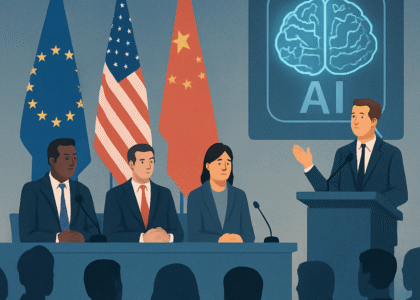The battlefield is changing — and fast. Artificial intelligence, once confined to labs and industry, is now being deployed in some of the world’s most dangerous conflict zones. From drone surveillance to autonomous targeting systems, AI is transforming how wars are fought, raising both strategic opportunities and deep ethical concerns.
In Ukraine, smart drones equipped with facial recognition software have been used to identify and target military personnel. In Gaza, AI-powered systems reportedly assist in analyzing satellite images to predict missile launches or militant movement. And in the Indo-Pacific, rival nations are investing in AI for naval and air defense systems that could one day act without direct human command.
This new frontier has triggered a global debate: Can nations control what they’ve unleashed?
The United Nations has urged countries to come together and define strict rules on autonomous weapons. Many human rights groups are pushing for a complete ban on “killer robots” — machines that can decide on lethal force without human intervention. But progress is slow. The technology is developing faster than the policies meant to regulate it.
One major concern is accountability. If an AI system wrongly targets civilians, who is responsible — the programmer, the military commander, or the machine itself? These are not hypothetical questions anymore. Incidents have already been reported in which AI-driven systems misidentified targets, leading to civilian casualties.
Yet, military leaders argue that AI can actually reduce human error. Algorithms don’t tire, panic, or make emotional decisions. In fast-moving, high-stakes situations, they might even outperform human judgment. Some officials say it’s not a question of if AI will be used in war, but how responsibly.

This arms race extends far beyond traditional superpowers. Startups and private tech firms are now key players, supplying software and hardware that can shift the balance in regional conflicts. The line between defense contractor and tech innovator is blurrier than ever.
Still, the public remains largely unaware of how deeply AI has penetrated global militaries. Unlike nuclear weapons, AI tools can be developed quietly, without vast resources or testing ranges. That makes them harder to track — and easier to misuse.
The world stands at a crossroads. With international tension already high and trust between governments fragile, AI in warfare may either trigger a new age of precision defense — or unleash chaos without accountability. The clock is ticking.





